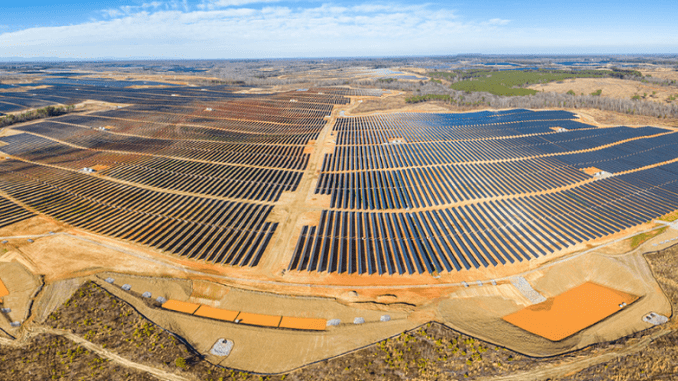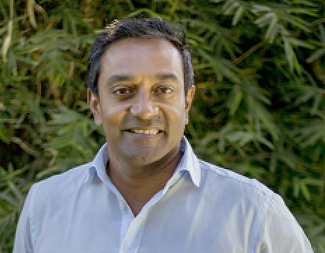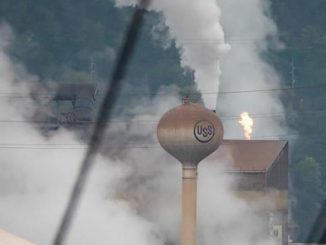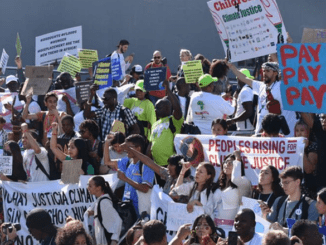
GENEVA, Switzerland, April 17, 2022 (ENS) – In a rare encouraging climate report, the UN’s scientific Intergovernmental Panel on Climate Change, IPCC, has recognized “increasing evidence of climate action” and held out hope, finding that, “We have options in all sectors to at least halve emissions by 2030.”
Yet, at the same time, the newest IPCC report has plenty of warnings that without immediate action to slash greenhouse gas emissions our options and solutions will disappear.
“We are at a crossroads. The decisions we make now can secure a liveable future. We have the tools and know-how required to limit warming,” said IPCC Chair Dr. Hoesung Lee, a South Korean professor in the economics of climate change, energy, and sustainable development.
“I am encouraged by climate action being taken in many countries. There are policies, regulations and market instruments that are proving effective. If these are scaled up and applied more widely and equitably, they can support deep emissions reductions and stimulate innovation,” said Dr. Lee.
The Summary for Policymakers of the IPCC’s Working Group III report, “Climate Change 2022: Mitigation of climate change,” was approved on April 4 by 195 member governments of the IPCC, through a virtual approval session that started on March 21. It is the third installment of the IPCC’s Sixth Assessment Report, AR6, which is scheduled for completion later this year.
The scientists who contributed to the new report on mitigation emphasize that to curb climate change the energy sector will have to undergo “major transitions” such as “a substantial reduction in fossil fuel use, widespread electrification, improved energy efficiency, and use of alternative fuels such as hydrogen.
“Having the right policies, infrastructure and technology in place to enable changes to our lifestyles and behavior can result in a 40-70 percent reduction in greenhouse gas emissions by 2050. This offers significant untapped potential,” explained IPCC Working Group III Co-Chair Priyadarshi Shukla of India, a published expert on global technology policy and energy demand forecasting.
“The evidence also shows that these lifestyle changes can improve our health and wellbeing,” he said.
Right now, the planet is warming as a result of human-generated, or anthropogenic, emissions, the Working Group III report finds, with “high confidence.”
“Net anthropogenic GHG emissions have increased since 2010 across all major sectors globally. An increasing share of emissions can be attributed to urban areas,” the IPCC report states.
“Emissions reductions in CO2 [carbon dioxide] from fossil fuels and industrial processes, due to improvements in energy intensity of GDP and carbon intensity of energy, have been less than emissions increases from rising global activity levels in industry, energy supply, transport, agriculture and buildings,” the report says.
Cities Can Help Curb Emissions
Cities offer emissions reduction opportunities, the report’s numerous authors recognize. Compact, walkable urban design can lower energy consumption, and emissions will come down with electrification of transport in combination with low-emission energy sources, and enhanced carbon uptake and storage using nature, they write.
“We see examples of zero energy or zero-carbon buildings in almost all climates,” said IPCC Working Group III Co-Chair Jim Skea. “Action in this decade is critical to capture the mitigation potential of buildings.”
Reducing emissions in industry will involve using materials more efficiently, reusing and recycling products and minimizing waste.
For basic materials, including steel, building materials and chemicals, low- to zero-greenhouse gas production processes are at various stages from pilot projects to nearing the commercial market.
This sector accounts for about a quarter of global emissions. Achieving net zero emissions will be challenging and will require new production processes, low and zero emissions electricity, hydrogen, and, where necessary, carbon capture and storage.
Changes in agriculture, forestry, and other land uses can provide large-scale emissions reductions and also remove and store carbon dioxide at scale, the report states. But the authors warn that “land uptake cannot compensate for delayed emissions reductions in other sectors.”
A great deal depends on what humankind does now that we have hard evidence of the changing climate. Responsive actions can benefit biodiversity, help us adapt to climate change, and secure livelihoods, food and water, and wood supplies, the IPCC report emphasizes.
Dr. M. Sanjayan, CEO of the nonprofit Conservation International, views the report as at once a warning and an opportunity. “At first glance, there is much to be concerned about in this latest report. Not only is humanity off track to keep average temperature rise below the ‘safe’ zone of 1.5 degrees C, we are on track to take our climate well beyond that limit, which would utterly reshape life as we know it.
“Needless to say, we must get off this track. What we must not do is give up or despair, because this report also offers an opportunity,” Sanjayan said.
“When you look closely, the IPCC shows what is possible if we take action now – not only to secure a livable and stable climate, but to take a massive global leap forward in terms of equity, justice and human development,” said Sanjayan, an award-winning TV host and news contributor, conservation scientist, and writer.

“The report also affirms something we’ve long known: that nature remains among the most effective (and cost-effective) climate solutions. Measures that protect nature – including reducing deforestation and implementing reforestation – make up three of the top five most effective options for cutting net emissions of climate-warming carbon by 2030,” Sanjayan pointed out.
“Unfortunately, we are missing this opportunity,” he said. “Nature remains a woefully underinvested solution. Meanwhile, the people who steward most of the nature that humanity relies on, and who will face the brunt of climate impacts in the coming years, are the least-equipped and the least responsible.”
“We all know that we need to phase out fossil fuels. But what is often overlooked is that even if we stopped using fossil fuels tomorrow, we would still not hit our climate targets,” Sanjayan said.
“What we must also do in this unique and rapidly closing window of opportunity is what this report all but screams out at us: Protect Nature. If we do not do this now, this window will close. In a hotter future, nature’s ability to help humanity avert a climate disaster will diminish. In other words, once we reach a 3C future, our solutions will be virtually gone,” warned Sanjayan.
Helen Clarkson, CEO of international non-profit Climate Group, agrees. “It is deeply distressing that we are not in a position to achieve a safe world for our future. Even if all current government and business commitments are met, we will vastly overshoot the warming target laid out by the IPCC,” she said.
“I can’t overstate the importance of governments and businesses setting ambitious targets, delivering on them, and eventually bringing them forward. The worrying issue right now is that many of them are only in the setting targets stage. The science has been clear for some time: net zero is not optional. This is the Climate Decade, and we must halve emissions in 2030 if we have any chance of net zero by 2050,” Clarkson urged.
“Many will read this report and come away believing that 1.5C is not feasible. But it IS feasible, and it has to be. Giving in to despair and resignation plays into the interests of climate denialists,” Sanjayan stressed. “We cannot afford a 3C future.”
“We can save our climate, and protect the nature we need to thrive, and live in a world that is more equal and just,” he said. “There is still time; our future remains to be written. But it’s going to take everything we have, and we need to start now.”
Featured image: Utility-scale solar project in Spotsylvania County, Virginia, near Washington, DC, January 15, 2021 (Photo by Hugh Kenny, Piedmont Environmental Council)
© 2022, Environment News Service. All rights reserved. Content may be quoted only with proper attribution and a direct link to the original article. Full reproduction is prohibited.



